
BB Seguridade Participacoes SA
BOVESPA:BBSE3


| US |

|
Johnson & Johnson
NYSE:JNJ
|
Pharmaceuticals
|
| US |
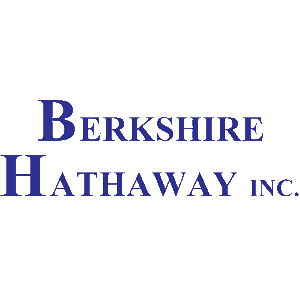
|
Berkshire Hathaway Inc
NYSE:BRK.A
|
Financial Services
|
| US |
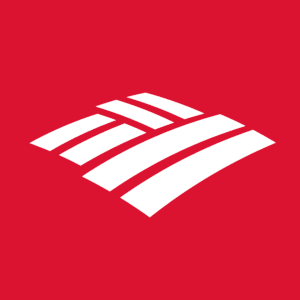
|
Bank of America Corp
NYSE:BAC
|
Banking
|
| US |

|
Mastercard Inc
NYSE:MA
|
Technology
|
| US |
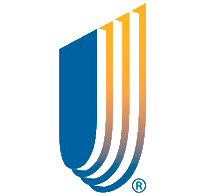
|
UnitedHealth Group Inc
NYSE:UNH
|
Health Care
|
| US |
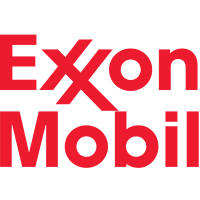
|
Exxon Mobil Corp
NYSE:XOM
|
Energy
|
| US |
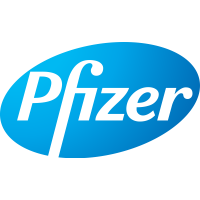
|
Pfizer Inc
NYSE:PFE
|
Pharmaceuticals
|
| US |

|
Palantir Technologies Inc
NYSE:PLTR
|
Technology
|
| US |

|
Nike Inc
NYSE:NKE
|
Textiles, Apparel & Luxury Goods
|
| US |

|
Visa Inc
NYSE:V
|
Technology
|
| CN |

|
Alibaba Group Holding Ltd
NYSE:BABA
|
Retail
|
| US |
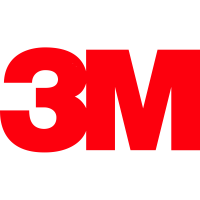
|
3M Co
NYSE:MMM
|
Industrial Conglomerates
|
| US |

|
JPMorgan Chase & Co
NYSE:JPM
|
Banking
|
| US |
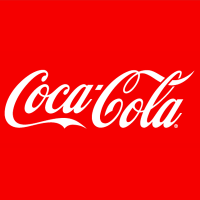
|
Coca-Cola Co
NYSE:KO
|
Beverages
|
| US |

|
Walmart Inc
NYSE:WMT
|
Retail
|
| US |
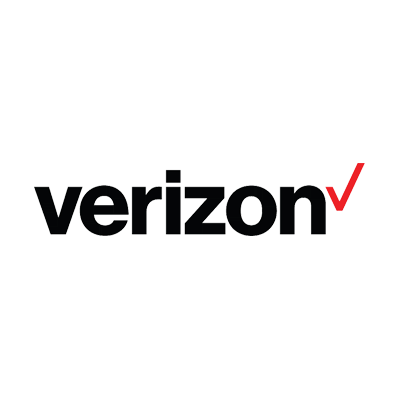
|
Verizon Communications Inc
NYSE:VZ
|
Telecommunication
|
Utilize notes to systematically review your investment decisions. By reflecting on past outcomes, you can discern effective strategies and identify those that underperformed. This continuous feedback loop enables you to adapt and refine your approach, optimizing for future success.
Each note serves as a learning point, offering insights into your decision-making processes. Over time, you'll accumulate a personalized database of knowledge, enhancing your ability to make informed decisions quickly and effectively.
With a comprehensive record of your investment history at your fingertips, you can compare current opportunities against past experiences. This not only bolsters your confidence but also ensures that each decision is grounded in a well-documented rationale.
Do you really want to delete this note?
This action cannot be undone.

| 52 Week Range |
31.95
37.42
|
| Price Target |
|
We'll email you a reminder when the closing price reaches BRL.
Choose the stock you wish to monitor with a price alert.

|
Johnson & Johnson
NYSE:JNJ
|
US |

|
Berkshire Hathaway Inc
NYSE:BRK.A
|
US |

|
Bank of America Corp
NYSE:BAC
|
US |

|
Mastercard Inc
NYSE:MA
|
US |

|
UnitedHealth Group Inc
NYSE:UNH
|
US |

|
Exxon Mobil Corp
NYSE:XOM
|
US |

|
Pfizer Inc
NYSE:PFE
|
US |

|
Palantir Technologies Inc
NYSE:PLTR
|
US |

|
Nike Inc
NYSE:NKE
|
US |

|
Visa Inc
NYSE:V
|
US |

|
Alibaba Group Holding Ltd
NYSE:BABA
|
CN |

|
3M Co
NYSE:MMM
|
US |

|
JPMorgan Chase & Co
NYSE:JPM
|
US |

|
Coca-Cola Co
NYSE:KO
|
US |

|
Walmart Inc
NYSE:WMT
|
US |

|
Verizon Communications Inc
NYSE:VZ
|
US |
This alert will be permanently deleted.
 BB Seguridade Participacoes SA
BB Seguridade Participacoes SA





























 You don't have any saved screeners yet
You don't have any saved screeners yet

Good morning, everyone, and thank you for waiting. Welcome to BB Seguridade's Third Quarter 2019 Earnings Conference Call. This event is being recorded. [Operator Instructions] The presentation is available in the Financial Information Presentation section of BB Seguridade's IR website at www.bbseguridaderi.com.br/en.
Before proceeding, let me mention that forward-looking statements that may be made during the conference call during -- regarding expectations, growth estimates, projections and future strategies of BB Seguridade are based on management's current expectations, projections of future events and financial trends that may affect the business of the group and do not guarantee future performance since they involve risks and uncertainties that could extrapolate the control of management.
For more information on the statements of the company, please check on the MD&A.
With us today are Mr. Bernardo Rothe, BB Seguridade's CEO; Mr. Werner Süffert, BB Seguridade's, CFO; and Mr. Rafael Sperendio, Head of Finance and IR. Please, Mr. Sperendio, you may now begin.
Good morning, everyone, and thank you for joining our third quarter earnings call. Let's start the presentation on Page #2, where we have year-to-date drivers of our earnings this quarter. Our recurring net income growth, 21% year-on-year to BRL 1.1 billion, supported by the operating result, which was up 25% on the back of a very strong commercial performance in credit life and pension plans. Financial results grew 4% and helped by the flattening yield curve and still favorable inflation dynamics on a defined and benefit pension plan that were really pressed. Our accounting net income of BRL 3.4 billion, helped by the oneoff capital gain that amounted to BRL 2.3 billion related to the sale of our equity stake in IRB in July this year.
Well, regarding our commercial performance in insurance, comparing apples-to-apples here, upon further analysis, I mean, by adjusting last year data, considering the current business structure in our JV with MAPFRE, insurance basis will -- almost 15% driven by credit life and rural. All the performance in pension plans stood out this quarter, showing improvements across our different metrics. We can see reserves with 14% over the last 12 months. Net inflows increased 3x year-on-year. Redemption rate fell 90 basis points, it's now a -- it's all-time low.
And finally, here to summarize our performance in premium bonds, also did well. Top line grew 8.5% year-on-year during the third quarter.
Moving to Page 3, now talking about the financial results. As you could see on the lower right-hand side, our financial results grew 4% year-on-year and accounted for 14% of the net income in the third quarter. So it's the all-time low contribution to the bottom line since we started to fold this metric.
And regarding the main variables that affect the financial results, we can see here on the benefits side, a decline in the average Selic rate, moving from 6.4% in the third quarter last year to 6% in the third quarter 2019. But this reduction in the average Selic rate was more than enough by the flatter yield curve. As you can see here on the yellow lines, the light yellow line represents the beginning of the period and the dark yellow bar, the -- sorry, the dark yellow line represents the end of this period. So while in this quarter, we had a flattening yield curve. The yield curve in the third quarter last year widened. So it got some mark-to-market gains mainly at Brasilcap, our premium bonds company, which helped somewhat the financial results, but the main positive impact came from the inflation rate. So if you can see over to your lower left-hand side, the IGP-M, the blue line here, posted deflation in the third quarter this year, while we saw an inflation of 2.8% in the third quarter last year. And as you know, IGP-M is an important index that compounds our liabilities related to the defined benefit pension plans at Brasilprev. So this deflation reduced the loss because of the liability in property to the improvement in financial results at Brasilprev.
Moving to Page 4, and talking about our insurance operations. Now, I'm going to focus on the pro forma figures. As I explained earlier, it's an adjustment we have been making in order to revise 2018 data, considering the actual structure post reorganization occurred in the end of last year.
So in the third quarter, premiums written grew 14% year-on-year and supported by credit life that grew 41%, helped by better, lower loan origination with individuals. Rural also did well, grew 15% year-on-year, accelerated the pace of rurals that we were showing in the end of the first semester. We have an improvement in -- across the different segments, crop issues was El Niño. Also, via linear, the credit life performance is the line there that offers the performance bonus that's also helping the commissions by the broker. So Rural is an important highlight of the quarter as well.
Life increased slightly the pace by growing 6% year-on-year. In the third quarter, you may remember that a -- in the end of the first semester, this growth rate was around 5%. Accelerated the pace, year-to-date, September fell to 5.5%.
On Page 5, you can see that Brasilseg also did well operationally. And here I'm going to focus beyond comparables. We could see that the combined ratio -- the chart on the lower right-hand side, combined ratio improved at the 10 basis points, driven by the increase in the loss ratio, down 2.6 percentage points on the back of lower frequency and severity of claim, the term life and in credit life.
G&A also improved, helped by the lower provisions for receivable losses. But as you can see, the chart in the upper right-hand side, the improvements in both loss ratio and the G&A ratio was almost fully offset by the increase in the commission ratio, which mainly related to the performance bonus that the insurance company might pay to the broker due to the outperformance in credit life and credit life with farmers in the agreement that we reached with MAPFRE in 2018.
Moving forward now on Page #6, financial results fell 40% year-over-year, given the lower Selic rate and the change in the accounting methodology related to the interest compounding on the provisions for judicial claims to be settled. As a result, we saw this decline of 40% year-on-year on a pro forma basis. But anyway, when we look at the overall performance, the decline in the financial results was totally offset by the increase in net premiums around 9% and by the increase in the combined net ratio that I just explained. So the net income grew 11% year-on-year in the third quarter and reached BRL 400 million.
Moving to -- on Page #7. We can see that contributions grew 44% year-on-year and the third quarter reached BRL 12 billion. The net inflow increased 3x to 233% to BRL 5 billion. Redemption rate moved down from 7.7% in the third quarter last year to 6.8% now. And it's at the all-time low. Assets under management now reached BRL 282 billion and increased 14% over the last 12 months. Management fees improved 10% year-on-year, while the average management fee charges reduced by 6 basis points to 1.02%. While the improvement in management fees, in addition to the improvement in financial results that I mentioned earlier, growth in the net income, up 32% in the third quarter this year to BRL 331 million.
Regarding premium bonds now, Page #8. Collections were up 9% year-on-year. Financial results grew 4%, given the wider net interest margin as you can see that was due to the mark-to-market gains that's related to the yield curve that flattened this quarter. As I explained previously, this, in fact, led to bottom line to grow 2% year-over-year now in the third quarter.
Moving now to the broker, Page #9. Revenues were up 40% year-on-year and 22% when we consider a linear distribution of the performance bonus received at the end of 2018 across the different quarters. So the main drivers for the top line growth were credit life, pension approvals in premium bonds and the -- also it's important to highlight the performance done or achieved of a robust commercial performance in credit life and credit life for farmers. The EBIT margin decreased 1.6 percentage points on an adjusted basis, and it was totally related to the mix of the products sold that was more focused on the high ticket products than it was in the third quarter last year. And as a consequence of the improvement in top line and the improvement in the operational margin, the net income grew 43% year-on-year in the third quarter.
Now finally, in the last page, we have our guidance monitor. As we can see here, we decided to revise up towards the guidance through the bottom line growth that was 8% to 13%, and we revised it up now to 13% to 17%. The main reason was the surprise, another positive surprise we had in financial results, the data I just explained and the favorable dynamics in inflation and the flattening yield curve throughout the quarter. And when we consider that when we analyzed the breakdown of the earnings with a growth of 15% year-to-date in operational results and a growth of more than 25% in the operational results year-to-date, the former range doesn't make sense anymore. That's why we decided to revise the guidance upwards.
Regarding the other 2 guidances as well, besides things and outperformance, we opted to maintain both guidances of written premiums and the growth in reserves because, at least, the top of these -- the 2 guidances is still feasible. That's why we've decided to maintain as we expect that both indicators, might converge to the interval. So that's how I would like to emphasize, and we can now jump into the Q&A session. Thank you.
[Operator Instructions] Our first question comes from Eduardo Nishio with Banco Plural.
Congrats for the results. A question on your guidance or earnings guidance, if we make the back-of-an-envelope calculation on how much you get for the fourth quarter, you get a number that is lower than the first few quarters in terms of earnings. I was wondering if it's being too conservative, given that the fourth quarter is typically the strongest quarter you have in the year? And also, I would like to ask you if you have any perspectives for 2020 as you have sold IRB. And I think earnings will be a bit more difficult to achieve without the unit if you have any perspectives or ideas and how do you get EPS grow for next year if the operational side will be -- would be good enough to offset that and also offset low interest rates?
This is Rafael. Thank you for the good question. So regarding the guidance revision, it's worth highlighting that we are expecting to reach the midpoint where we decided to revise it, that's because as I mentioned earlier in the presentation, the former range doesn't make sense anymore when we analyze operational results growing 15% and financial results growing 25%. So well, it's time to revise it upwards.
Regarding the probability, the scenario that we have for the fourth quarter. Well, there's a higher probability that when we analyze the matrix that we are going to stay in the upward part of the guidance. So of course -- but worth noting that we look at the interval that we have been providing. The deviation from the midpoint is quite small, it's like BRL 80 million up and down. So well, it's a very small interval, and we decided to keep the 13% as I mentioned, just to be conservative. That's why we decided to maintain this range because it's -- the deviation of the dispersion from the midpoint is very, very small. With regards to 2018, it's -- sorry, 2020 earnings. Of course, IRB was an important contributor for earnings. They used to contribute with like 5% of our earnings and we are going to have a high comparable in the first half next year. But anyway, we still believe that the performance in financial results will more than offset this lack of IRB next year. But the main difficult will come from, again, after 3 years level, again, from lower financial results, our expectation is that maybe when we analyze what's included before yield curve that the Selic rates will be flat at 4.5% next year and differently from what happened in 2019, we don't expect that we can reach mark-to-market gains from the flattening move of the forward yield curve. So it's going to make our life much harder in 2020 when we think about the performance in financial results. But anyway, we believe that we can more than offset it with a better operational performance, despite not having IRB now in our portfolio anymore.
[Operator Instructions] This concludes today's question-and-answer session. I would like to invite Mr. Sperendio to proceed with his closing statements. Please, Mr. Sperendio, go ahead.
I'd like to thank you all once again for joining our earnings call. And myself and the Investor Relations team, we are available for any further questions you might have. Thank you, and have a good day.
With this, we conclude BB Seguridade's Conference call for today. As a reminder, the material used in this conference call is available on BB Seguridade's Investor Relations' website. Thank you very much for your participation, and have a nice day. You may now disconnect.